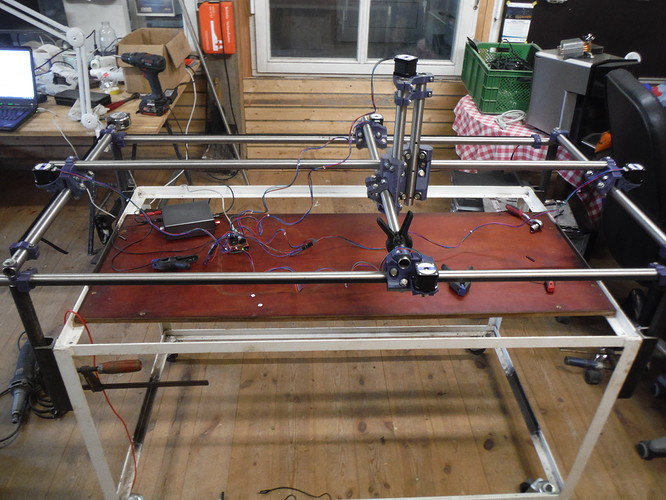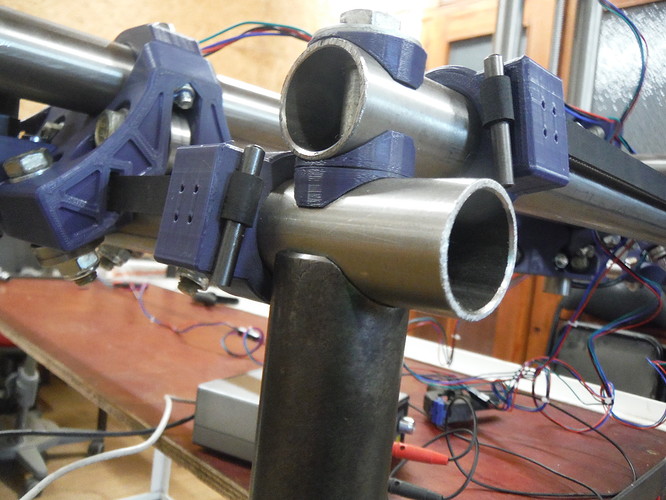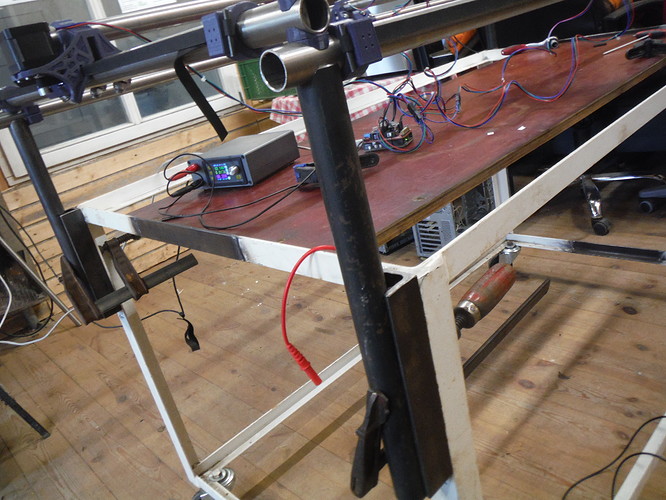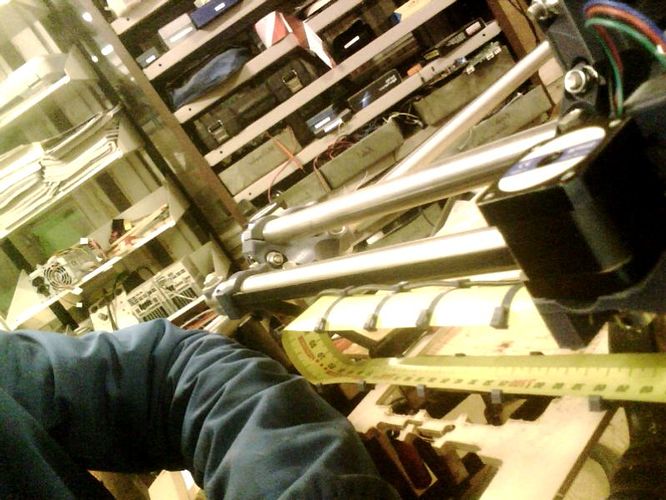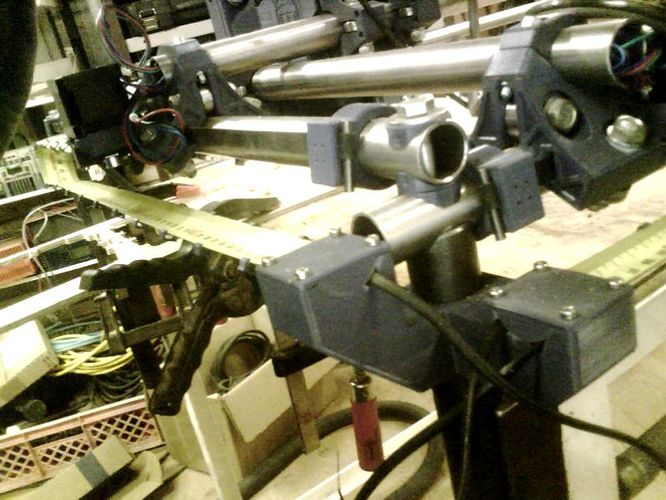Hi.
Just got my mpCNC run, without big issues.
One of five steppercable was wired wrong (two wires inverted), that drove me almost crazy until I figured that out.
Main goal was to add as much as possible stability to maximize precision but also having a big working area.
I used a available frame from an cart (got it years ago for free from a trash behind a hardware store). The corners and belt tensioners are very different from the standard, but I think this adds a lot rigidity. The vertical parts are 30mm full material. (just temporarely fixed with clamps)
The hole setup is adjustable in height, so I can work on thick material without having long Z rails.
Work area is 50x115cm. Frame is big enough to pass trough a a standard 125cm plate.
If I want higher precision/less vibration, the right bar including the truck is movable towards the left just by loosing 3 screws.
I used 25x2mm stainless steel for just 6,60€ per meter on ebay. Its not perfectly round and had a tiny bow (0,6mm per m), but I reduced it to 0,3mm and put the high part showing up, so its compensated from the weight on top.
Sorry, I cant behave different as a toolmaker 
If the X axis is vibrating to much, I might exchange it to full material.
In total I’m just at 160-170€ for all parts! (table, tool, black steel parts and computer/power supply excluded). Decent price for a CNC of this size!
I plan to put an old tower-PC below on the bottom (maybe headless with octoprint), use the power supply of it for the steppers and mount everything shielded inside to reduce the noise, esspecially during plasmacuts.
As cable guides I plan to try the tape measure cable chain.
I plan to use a router for wood/aluminium and a plasma torch. Rotary axis is also nice and I plan to use an existing dividing head for this.
